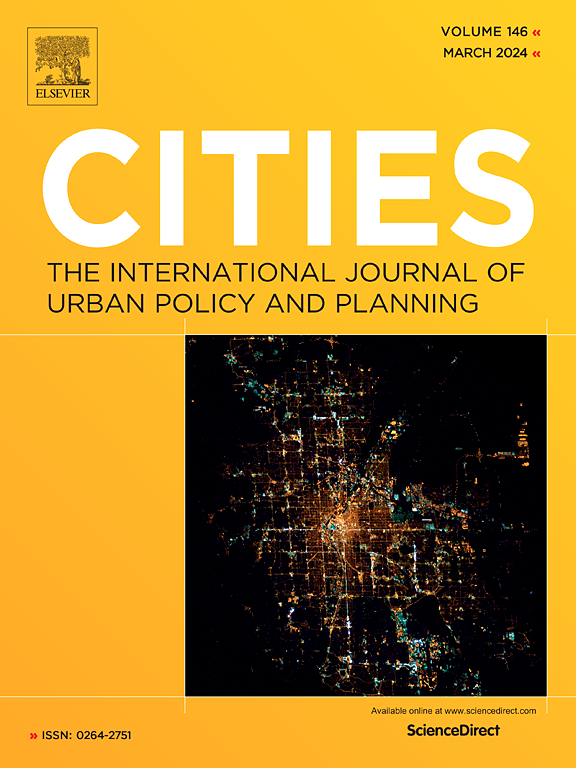Deep learning meets urban design: Assessing streetscape aesthetic and design quality through AI and cluster analysis
IF 6
1区 经济学
Q1 URBAN STUDIES
引用次数: 0
Abstract
Urban streetscapes possess unique aesthetic qualities, yet the link between street design and aesthetic quality, particularly across different streetscape types, remains underexplored due to evaluation limitations. This study bridges the gap by integrating deep learning and cluster analysis. We constructed a dataset through manual aesthetic ratings of 500 sampled street images by 150 participants, then fine-tuned a ResNet-50 to automatically predict the aesthetic of 16,455 streetscape images from Wuhan. Street design quality was assessed using visual landscape elements derived from semantic segmentation, while the HDBSCAN algorithm was employed to cluster streetscape types. Multiple linear regression and grouped regression analysis were employed to examine design-aesthetic relationships across six streetscape types. Key findings include: (1) the model's high accuracy in assessing aesthetics, with vegetation and water as key factors; (2) streetscapes were categorized into six clusters, with highways and bridges rated as having the highest aesthetic quality, and overpasses rated the lowest; (3) greenness, openness, and walkability strongly correlated with aesthetics, especially in residential streets; and (4) The impact of street design quality on aesthetic perception varies significantly across different types of streets, suggesting that street function may influence aesthetic standards. This study introduces a novel framework for evaluating urban streetscape aesthetics and design, providing actionable insights for creating sustainable, aesthetically pleasing environments.
求助全文
约1分钟内获得全文
求助全文
来源期刊

Cities
URBAN STUDIES-
CiteScore
11.20
自引率
9.00%
发文量
517
期刊介绍:
Cities offers a comprehensive range of articles on all aspects of urban policy. It provides an international and interdisciplinary platform for the exchange of ideas and information between urban planners and policy makers from national and local government, non-government organizations, academia and consultancy. The primary aims of the journal are to analyse and assess past and present urban development and management as a reflection of effective, ineffective and non-existent planning policies; and the promotion of the implementation of appropriate urban policies in both the developed and the developing world.
 求助内容:
求助内容: 应助结果提醒方式:
应助结果提醒方式:


